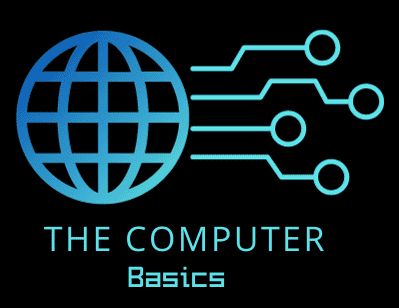Cloud computing is changing the way businesses and individuals use technology. It’s like having a giant computer in the sky that you can access from anywhere.
Cloud computing lets you use computing resources over the internet instead of owning and maintaining physical servers and data centers.
With cloud computing, you don’t need to buy expensive hardware or worry about running out of storage space. You can easily scale up or down based on your needs. It’s flexible, cost-effective, and can help you work more efficiently.
Cloud computing offers many benefits, from improved productivity to access to cutting-edge tech. Whether you’re a small business owner or part of a large corporation, the cloud can help you stay competitive in today’s fast-paced digital world.
Key Takeaways
- Cloud computing provides on-demand access to IT resources without the need for physical infrastructure
- You can scale your computing power up or down quickly to meet changing business needs
- Cloud services offer cost savings and access to advanced technologies for businesses of all sizes
Fundamentals of Cloud Computing
Cloud computing is changing how businesses and people use technology. It offers flexible, scalable ways to access computing resources over the internet.
Defining Cloud Computing
Cloud computing lets you use computing resources on-demand via the internet. Instead of owning servers or data centers, you can rent access to storage, networks, and software from a cloud provider.
You only pay for what you use, like a utility. This makes it easy to scale up or down as your needs change.
Cloud services are available anywhere you have internet. You can access your files and apps from any device, making work more flexible.
Types of Cloud Services: IaaS, PaaS, SaaS
There are three main types of cloud services:
Infrastructure as a Service (IaaS): You rent basic computing resources like servers and storage. You manage the operating systems and apps.
Platform as a Service (PaaS): The provider handles the infrastructure and operating systems. You focus on developing and running your apps.
Software as a Service (SaaS): You use software over the internet, often through a web browser. The provider manages everything, including the app itself.
Each type offers different levels of control and management. IaaS gives you the most control, while SaaS is the most hands-off option.
Cloud service providers offer these services in various combinations. You can choose what works best for your needs and technical skills.
Cloud Models: Public, Private, and Hybrid
Cloud computing offers different models to fit various needs. These models give you options for how you store and access your data and apps. Let’s look at the main types of clouds and how they work.
Public Cloud Explained
Public clouds are run by big tech companies. You can use them over the internet. They’re easy to set up and don’t cost much to start.
Some benefits of public clouds:
- You only pay for what you use
- They can grow with your needs
- You don’t have to manage the hardware
But there are things to watch out for:
- Less control over your data
- Might not meet all security rules
- Can get pricey if you use a lot
Companies like Amazon, Microsoft, and Google run big public clouds. They’re great for small businesses or new projects.
Private Cloud Benefits
A private cloud is just for your company. You can set it up in your building or have someone else run it for you.
Why choose a private cloud?
- More control over your data
- Can meet strict security rules
- Customize it to fit your needs
Private clouds use virtualization to make the most of your hardware. This means you can run more apps on fewer machines.
But private clouds have downsides:
- Cost more to set up
- Need experts to run them
- Might not grow as fast as public clouds
They’re good for big companies or those with special security needs.
Hybrid Cloud: Combining the Best of Both Worlds
A hybrid cloud mixes public and private clouds. It lets you use both types together.
Key features of hybrid clouds:
- Move apps between public and private as needed
- Keep sensitive data private, run other apps in public
- Scale up quickly using public cloud when needed
Hybrid clouds give you:
- Flexibility to use the best cloud for each task
- Better control over costs
- A way to slowly move to the cloud
They’re tricky to set up but offer the most options. Many companies use hybrid clouds to get the best of both worlds.
Scalability and Flexibility in Cloud Computing

Cloud computing gives you the power to grow or shrink your IT resources as needed. You can adjust quickly to changing demands without wasting money on unused capacity.
Elastic Resources and Pay-As-You-Go Model
Scalability in cloud computing means you can easily add or remove computing power, storage, and other resources. When your website gets a traffic spike, you can scale up to handle the load. During slow times, you can scale down to save money.
The pay-as-you-go model lets you only pay for what you use. No need to guess how much capacity you’ll need in advance. You can:
- Add more virtual machines in minutes
- Increase storage space instantly
- Boost processing power for big jobs
This elastic compute model saves you from buying expensive hardware that sits idle most of the time.
Meeting the Demands of Growth and Innovation
Cloud scalability helps your business grow without tech headaches. As you expand, you can easily:
- Support more users
- Handle bigger workloads
- Try out new ideas quickly
You don’t need to worry about running out of server space or processing power. The cloud gives you virtually unlimited scalability.
This flexibility lets you innovate faster. Want to test a new app? Spin up some servers, run your tests, then shut them down when you’re done. You can experiment without big upfront costs.
Cloud computing adapts to your needs, helping you stay competitive in a fast-changing world.
Security and Compliance in the Cloud

Cloud computing brings new challenges for protecting data and meeting regulations. But it also offers powerful tools to enhance security and streamline compliance efforts.
Protecting Data and Computing Resources
Cloud security involves safeguarding your information and systems in the cloud. Cloud providers use strong encryption to protect data both at rest and in transit.
They also employ advanced firewalls and intrusion detection systems. These tools guard against cyber attacks and unauthorized access attempts.
Many providers offer identity and access management features. These let you control who can view or modify your data and resources.
Regular security updates and patches are applied automatically. This keeps your systems protected without extra work on your part.
Regulatory Compliance Across Industries
Cloud compliance means meeting legal and industry standards in the cloud. Different sectors have unique requirements, like HIPAA for healthcare or PCI DSS for payments.
Cloud providers offer specialized tools to help you stay compliant. These include:
- Audit logs and reporting
- Data residency controls
- Encryption key management
Many providers undergo regular third-party audits. This proves they meet strict security and compliance standards.
You can often leverage a provider’s compliance certifications. This can simplify your own compliance efforts and audits.
Cloud Computing in Practice

Companies big and small are using cloud tech to save money and work smarter. Let’s look at some real-world examples and new trends.
Success Stories: Businesses Leveraging the Cloud
Netflix switched to Amazon Web Services and now streams shows to millions without a hitch. They can add servers fast when a hot new series drops.
Airbnb uses the cloud to handle spikes in bookings. They can scale up during busy seasons and down when it’s slow.
Small businesses benefit too. A local bakery might use cloud apps to track orders and inventory. This saves time and cuts costs.
Even governments are getting in on the action. The UK’s gov.uk site runs on the cloud, making it easier to update and more reliable for citizens.
From Migration to Transformation: Real-World Applications
Cloud migration isn’t just about moving stuff online. It’s about changing how you work.
Coca-Cola moved their IT to the cloud and saved big on hardware costs. But the real win? They can now analyze data faster to spot trends.
Spotify uses the cloud to suggest songs you’ll love. Their app crunches tons of data to make playlists just for you.
Doctors use cloud tech to share patient info securely. This means better care, especially in emergencies.
Game developers use the cloud to let millions play together online. No more buying expensive servers that sit idle most of the time.
Emerging Trends: Quantum Computing, Containers, and Serverless
Quantum computing in the cloud could solve complex problems super fast. Think better weather forecasts or new drug discoveries.
Containers let devs package up code and run it anywhere. This means apps that work the same on your laptop or in the cloud.
Serverless computing is the new kid on the block. You just write code, and the cloud takes care of the rest. No need to manage servers at all.
AI in the cloud is getting smarter. It’s helping companies chat with customers, spot fraud, and even drive cars.
Edge computing brings the cloud closer to you. It’s great for things that need quick responses, like self-driving cars or smart factories.

